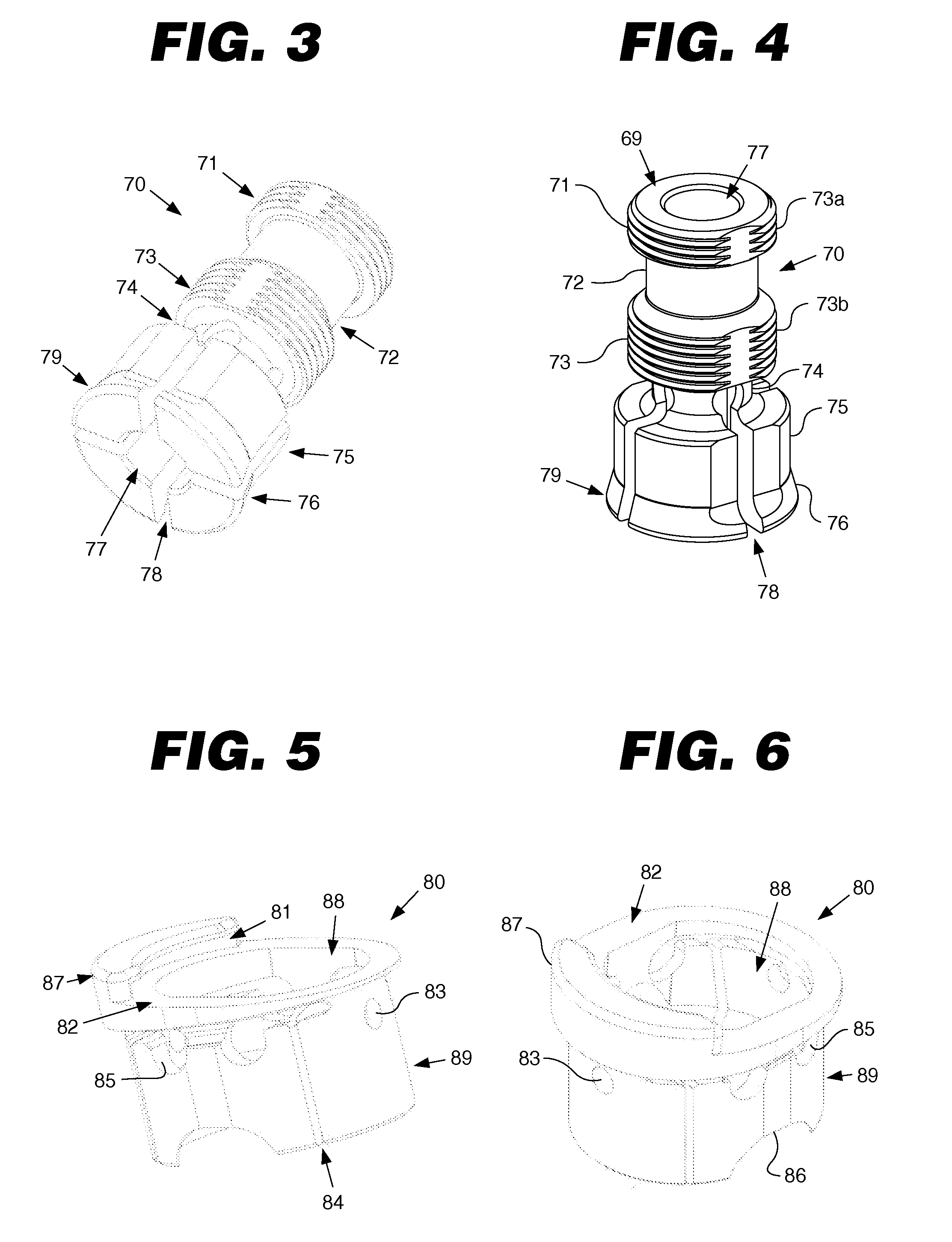Locking instrument assembly
a technology of locking instruments and parts, applied in the field of orthopaedic cutting instruments, can solve the problems of limiting the amount of stability achieved, unable to control the freedom of previous devices, and unable to be relatively accessible, so as to reduce the need for secondary fixation devices.
- Summary
- Abstract
- Description
- Claims
- Application Information
AI Technical Summary
Benefits of technology
Problems solved by technology
Method used
Image
Examples
second embodiment
[0115]FIGS. 3 and 4 illustrate the inner collet. The inner collet 70 includes a first end portion 76, a second end portion 71, and a longitudinally extending inner bore 77. The first end portion 76 has a collar 79 and a base portion 75. The base portion 75 may be cylindrical, oval, or cylindrical with tangent portions removed. In the depicted embodiment, the base portion 75 is generally cylindrical, and the inner bore 77 is substantially coaxial with the base portion 75.
[0116]Inner collet 70 functions as a collet or wedge. The collar 79 may include one or more relief areas 78. The relief areas 78 allow a portion of the inner bore 77 to at least partially collapse. In some embodiments, the relief area 24 has a keyhole shape. The second end portion 71 has a fastener member 73. In the embodiment depicted in FIG. 3, the fastener member 73 is a helical groove or thread, but those of ordinary skill in the art would understand that other types of fastening mechanisms may be used. The faste...
third embodiment
[0140]FIGS. 40, 41, and 42 illustrate the locking instrument assembly. The locking instrument assembly 400 includes an inner collet 412, an outer body 430, a handle 456, a fastener 458, a knob 460, and a washer 464. The fastener 458 and the washer 464 are used to mount the handle 456 to the inner collet 412.
[0141]FIGS. 43 and 44 illustrate the inner collet 412. The inner collet 412 has a first end portion 414, a second end portion 416, and a longitudinally extending inner bore 418. The inner bore 418 is adapted to receive the intramedullary device 100. In other words, the inner bore 418 is shaped to fit the intramedullary device 100. The first end portion 414 has a collar 420 and a base portion 426. The base portion 426 may be cylindrical, oval, or cylindrical with tangent portions removed. In the depicted embodiment, the base portion 426 is generally cylindrical. In contrast to the previous embodiments, the inner bore 418 is offset from the central axis of the base portion 426. In ...
PUM
 Login to View More
Login to View More Abstract
Description
Claims
Application Information
 Login to View More
Login to View More - R&D
- Intellectual Property
- Life Sciences
- Materials
- Tech Scout
- Unparalleled Data Quality
- Higher Quality Content
- 60% Fewer Hallucinations
Browse by: Latest US Patents, China's latest patents, Technical Efficacy Thesaurus, Application Domain, Technology Topic, Popular Technical Reports.
© 2025 PatSnap. All rights reserved.Legal|Privacy policy|Modern Slavery Act Transparency Statement|Sitemap|About US| Contact US: help@patsnap.com



